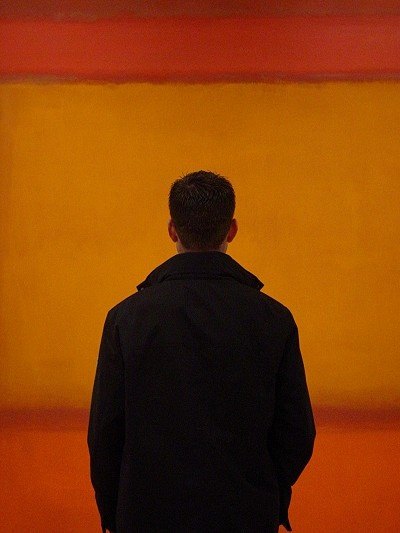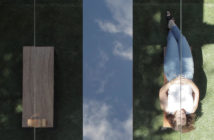Art is difficult to understand. In the domain of public perception, few truisms have enjoyed greater staying power than this one. What with its endless parade of unfamiliar forms, its highbrow hijinks and hopelessly cryptic meanings, things can hardly be expected to be otherwise. Many in number, however, are those who would explain it. In the domain of art discourse, little is met with more zeal than the opportunity to vociferate – usually at great length, often with language more abstruse than the thing it purports to illuminate, and almost always with an air of superiority that would give even the most steely surgeon sweaty palms. The gulf between art and the public is precariously bridged. At best, there is “appreciation.” At worst, there is understanding – for what is understood is not the work itself but its disfiguration by the very systems it exists to derail.
In truth, the problem isn’t that art is difficult to understand. The problem is that art is impossible to understand. For to understand is to grasp, to seize hold of with the mind, to lay claim to intellectually. That nine plus six equals fifteen is the sort of thing one understands (once acquired, the knowledge becomes another possession, another weapon in one’s intellectual arsenal), as is the fact that the engine powers the crankshaft that rotates the gears that drive the wheels. Understanding – itself something of a misnomer, as “overstanding” would more accurately describe the relationship between stander and stood – is a function of instrumental reason, and as such can’t be separated from the will to mastery. The sort of standing one does in relation to art is of another kind altogether. Indeed, to understand art is precisely to misunderstand it, because art is impervious to mastery of any kind (not even the artist has full mastery over his art). A participatory experience rather than a unit of knowledge to be acquired, art is larger than we are, calling therefore to be entered rather than assimilated.
If art is not to be understood, what, then, are we to make of it? How are people to approach it, and why should anyone bother? With matters of practical urgency pressing in on our consciousness, what value can there be in attending to something that promises nothing?

First, there is the standing itself – the stilling of body and mind before a thing that asks that we pause. In a culture of hypermobility driven by the imperative to achieve and acquire, this alone can seem a radical act. But a genuine art encounter calls for nothing less than the suspension of some of our most entrenched cultural obsessions. Turning away from efficiency and utility in favor of the mysterious allure of slow time, it is an encounter that also demands to be unmediated. While the impulse to broadcast one’s every move is reducing our lives to a sequence of snapshots and cheap social applause, art offers a respite from this increasingly insatiable desire for witness. Here, the value of one’s experience is measured not by what one has to show for it or the volume of one’s audience but by the qualitative richness of the experience itself.
An inanimate thing asks that we pause; to establish an encounter we need only consent. Face to face with a stranger, the mind initially reverts to reflexes: assessing intentions, discerning value – the whole panoply of responses surely rooted in the survival instinct. But if we can suppress the urge to know and to master, if we can simply be present for an experience we can neither use nor “report,” another mode of being becomes possible.
When nothing is expected of us, all becomes sheer exploration. Unoccluded by concepts or preconceived expectations, sensation sharpens. One becomes more attuned not just to the sensory qualities of the stranger but also to one’s own visceral and psychic responses. Associations arise and dissipate just as freely. Since there is no problem to be solved and nowhere to arrive, linearity of mind gives way to a cognitive expansiveness that embraces contradiction and lets ambiguity just be; bewilderment gives way to the adventure of the wilderness. Amid the cascade of sensations, perceptions, and associations, fresh insights can arrive like gifts from some agency not wholly our own. But above all there is a precious humility, for with the need to know in abeyance, the clamoring ego has been temporarily silenced.

James Austin Murray, (left to right): "Horse Feathers," 2015, oil on canvas, 60" x 60"; "Hat Trick," 2016, oil on canvas, 60" x 60"; "Warp and Weft," 2016, oil on canvas, 36" x 36". Courtesy of the artist and Lyons Wier Gallery.
In the absence of ego, another way of being-in-relation becomes possible. Whereas understanding is always striving toward something, a kind of standing we might call instanding does something softer, more patient, and far more subtle. To stand before otherness with a desire only to perceive it is to enter into a mode of deep attention without purpose or agenda. Since there is nothing to “get” — that acquisitive act that forecloses further engagement — the relation is one of perpetual and reciprocal unfolding. The mysterious being inherently inexhaustible, no two encounters are ever alike, each one shaped by the vibratory flux of matter and time in which beholder and beheld both participate.
Art as empathic encounter: if understanding traffics on the plane of concepts, instanding is rooted in the deeper ground of empathy. Can we learn to not just tolerate otherness but to welcome it, attend to it, and honor its presence? This is the question that art dares us to consider. The axiomatic claim is that art is as useless as a tool is useful. But if art’s uselessness is one of its defining features, it is a definition cast from the island of reason. In the larger waters beyond, art’s power as a spiritual technology is a reality that has been borne out through the millennia. Forget understanding. Before art let’s stand otherwise – and let it teach us to stand in.




